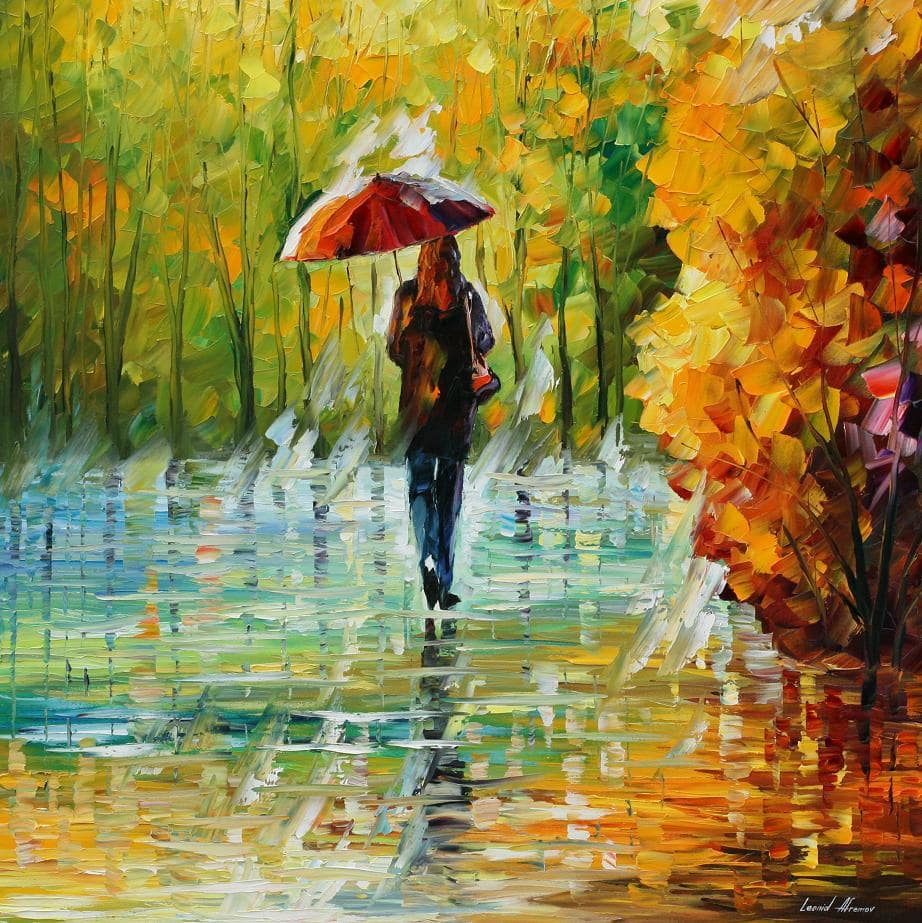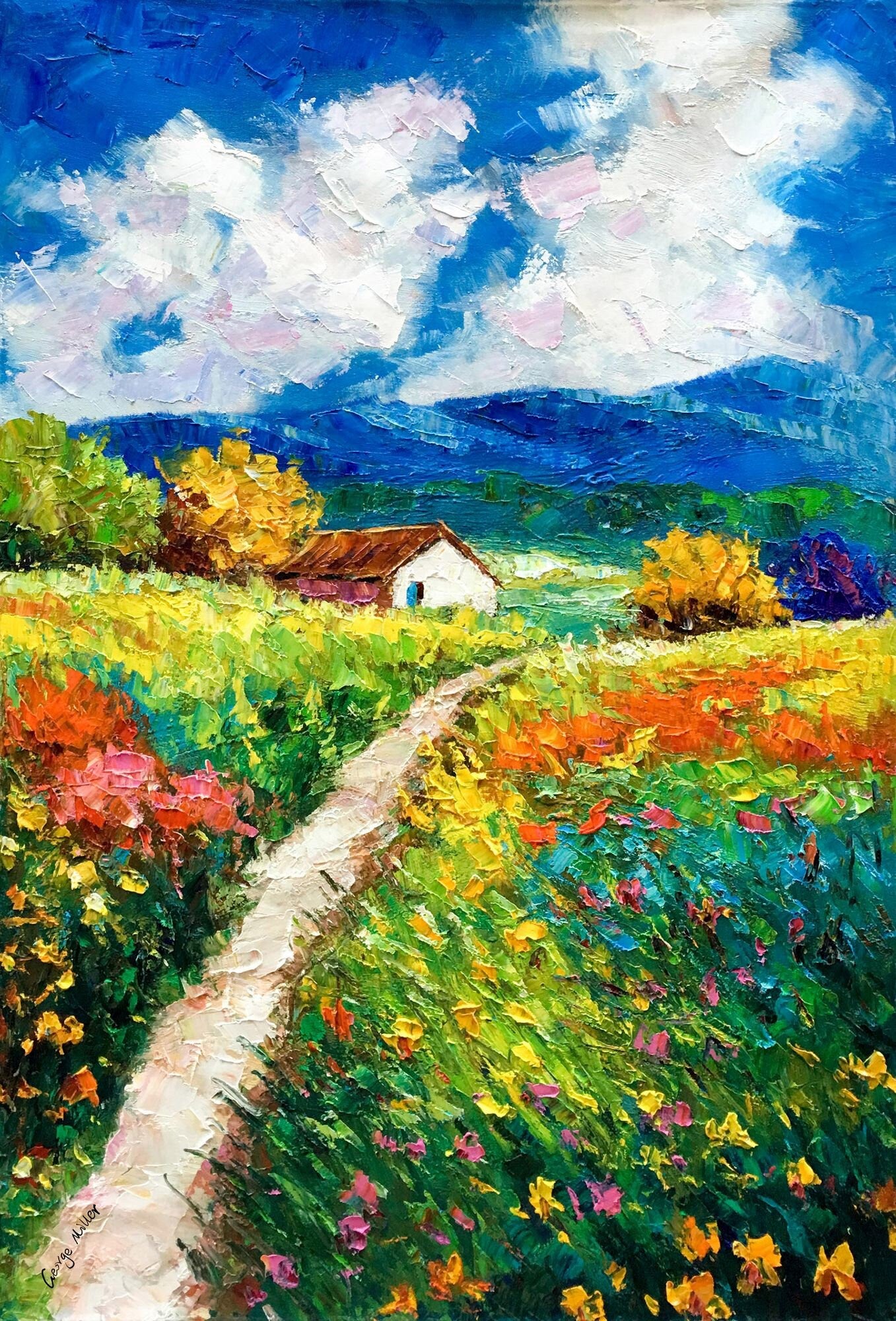Checking out Everything About Oil Paintings: A Guide to Comprehending Their Charm and Value
Oil paints have astounded target markets for centuries, offering a peek right into the creative proficiency of numerous periods. Their abundant history is intertwined with innovative techniques and extensive psychological expression. Comprehending the materials and approaches behind these art work can improve gratitude. Furthermore, the market for oil paints presents possibilities for investors and enthusiasts alike. As one discovers this fascinating globe, the concern develops: what makes an oil paint absolutely useful?
The History of Oil Paint: A Trip With Time
Oil paint has roots that date back to ancient times, it absolutely grew throughout the Renaissance, when artists discovered its convenience and rich shade potential. Early instances can be mapped to the 7th century, with methods evolving especially across societies. The medium ended up being prominent in Northern Europe in the 15th century, especially via the jobs of artists like Jan van Eyck, that pioneered its use for thorough realism and vivid tones. This period marked a separation from tempera paints, permitting higher deepness and texture. As oil painting spread, it affected plenty of artists, bring about masterpieces by distinguished figures such as Leonardo da Vinci and Rembrandt. The medium's tradition continues, forming the art globe well right into modern times.
Recognizing Oil Repaints: Materials and Techniques
As artists explore the world of oil paints, they run into a diverse range of products and techniques that specify this tool. The key components of oil paint consist of pigments, which provide shade, and drying out oils, such as linseed, that bind the pigments and facilitate application. Various additives can customize the paint's appearance and drying out time, enhancing adaptability. Strategies like glazing, where clear layers are developed, and impasto, which involves applying thick paint, permit different aesthetic impacts. In addition, the use of brushes, palette knives, and even fingers can produce one-of-a-kind structures and coatings. Understanding these products and methods allows artists to completely reveal their imagination and achieve the desired influence in their art work.
The Duty of Shade in Oil Paints
Color plays a critical role in oil paints, affecting both visual allure and emotional resonance. Comprehending color theory essentials, consisting of the relationships in between colors, can enhance a musician's capability to convey state of mind and atmosphere. In addition, grasping color blending techniques permits for higher deepness and richness in a paint's combination.

Color Theory Basics
Understanding shade theory is important for musicians functioning with oil paints, as it forms the foundation for developing unified and visually interesting structures. Color theory incorporates the research of exactly how colors communicate, the color wheel, and the partnerships between primary, additional, and tertiary colors. Musicians utilize corresponding colors to boost contrasts and produce centerpieces, while similar colors advertise unity and cohesiveness within an item. Additionally, the principles of cozy and great shades affect the assumption of deepness and space in a painting. Grasping these concepts permits musicians to manipulate color successfully, assisting the viewer's eye and interacting their desired message. Mastery of shade concept eventually enriches a musician's capacity to convey feelings and concepts through their work.
Psychological Impact of Color
The emotional influence of color in oil paintings plays an important function in exactly how visitors link and view with art work. Shades evoke particular sensations and state of minds, affecting the audience's emotion. As an example, cozy shades like oranges and reds can create a feeling of heat and energy, while great tones such as blues and greens commonly stimulate calmness or self-contemplation. Artists strategically select shade palettes to enhance narrative aspects, leading the target market's emotional journey. The saturation and contrast of colors further amplify these effects, drawing focus and producing emphasis. Eventually, the interaction of shades in oil paints not just improves their aesthetic charm yet likewise works as a powerful medium for psychological expression, improving the visitor's experience and analysis.
Color Mixing Techniques
While many facets of oil paint add to the general composition, mastering shade mixing techniques is vital for accomplishing desired results and deepness. Color blending can be come close to with various approaches, consisting of the additive and subtractive processes. Additive blending includes combining shades of light, while subtractive mixing depends on pigments, where shades blend to create brand-new tones. Musicians commonly make use of a restricted combination to produce harmonious works, understanding the partnerships between key, additional, and tertiary colors. Strategies such as glazing and scumbling even more boost depth and luminance. By masterfully mixing shades, an artist can evoke feelings, develop prime focus, and accomplish a feeling of realism, eventually boosting the paint's aesthetic and psychological influence.
Famous Oil Painters and Their Iconic Works

Renowned for their mastery of color and method, oil painters have produced a few of one of the most popular art work in background. Renowned artists like Vincent van Gogh captivated audiences with his emotive brushwork in "Starry Night," while Claude Monet's "Perception, Daybreak" laid the foundation for Impressionism. Leonardo da Vinci's "Mona Lisa" stays a long-lasting sign of creative brilliant, showcasing his ability in catching human expression. Rembrandt's "The Evening Watch" highlights his cutting-edge usage of light and shadow. Other noteworthy figures include Pablo Picasso, that transformed modern-day art with his bold experimentation in works like "Les Demoiselles d'Avignon," and Georgia O'Keeffe, whose lively depictions of flowers and landscapes aided specify American modernism. Each artist's unique design added greatly to the oil paint landscape.
How to Evaluate the Quality of an Oil Paint
Examining the high quality of an oil painting entails a cautious evaluation of workmanship methods, in addition to an analysis of shade and composition. Observing brushwork, layering, and the application of paint can reveal the musician's ability degree. Furthermore, the interplay of colors and the overall setup of components add substantially to the painting's visual worth.
Evaluating Workmanship Methods
A precise evaluation of workmanship methods is vital for identifying the top quality of an oil painting. Critics ought to initially analyze the application of paint; thick, distinctive brushstrokes may recommend a proficient hand, while overly consistent applications could suggest an absence of depth. oil paintings for sale. The layering strategy is also crucial; the presence of glazes and varied density can improve luminosity and intricacy. Furthermore, the quality of the products made use of, such as the canvas and pigments, plays a considerable role in longevity and total aesthetic. Interest to information in elements like edges and shifts in between shades reflects the musician's dedication to their craft. Ultimately, these methods add to the painting's psychological effect and market worth, functioning as indications of the artist's skill and intent
Examining Shade and Make-up
While evaluating the quality of an oil painting, one need to concentrate on the interaction of color and structure, as these components are basic to the art work's overall effect. Color options can stimulate emotions and establish state of mind; therefore, the artist's scheme should be taken a look at for harmony and comparison. A healthy structure guides the customer's eye and develops a feeling of unity. Artists typically employ techniques like the regulation of thirds or leading lines to enhance visual passion. Additionally, using light and shadow can add depth, enhancing the three-dimensionality of the paint. Inevitably, an effective oil paint weds color and structure, engaging the viewer and welcoming a much deeper admiration of the musician's vision and method.
Caring for and Preserving Oil Paintings
Proper treatment and preservation of oil paintings is vital for maintaining their integrity and long life. To secure these artworks, it is important to show them away from direct sunshine, which can cause fading and discoloration. Keeping a stable environment with controlled temperature and moisture more aids in avoiding damages. Cleaning up must be done carefully using a soft, dry fabric, avoiding any type of harsh chemicals that could harm the paint or varnish. Routine evaluations for indicators of wear and tear, such as cracking or flaking, are a good idea. When transporting or storing oil paints, proper cushioning and framework are essential to stay clear of physical damage. Eventually, persistent treatment contributes to the visual allure and worth here of oil paintings gradually.
The Market for Oil Paints: Investing and accumulating
Understanding the market dynamics for oil paints is crucial for collection agencies and investors alike. The value of these art work is influenced by numerous elements, including the artist's online reputation, historical significance, and existing patterns. Collectors often seek pieces that reverberate personally while thinking about prospective admiration in worth. Galleries and public auctions offer as primary places for buying and marketing, with costs fluctuating based upon need and rarity. Investing in oil paintings calls for research right into the market, along with an understanding of credibility and provenance. In addition, emerging artists may offer chances for significant returns, while established names can command high costs. Generally, a calculated approach to accumulating can generate both aesthetic enjoyment and economic rewards.

Regularly Asked Questions
What Are the Environmental Influences of Oil Paint Materials?
The ecological impacts of oil paint materials consist of the release of unstable natural substances (VOCs), dangerous waste generation, and resource removal for pigments. These aspects add to contamination and ecological destruction, increasing issues amongst environmentally aware artists and customers.
How Do Various Canvases Impact Oil Painting Results?
Different canvases affect oil painting results considerably. Surface area, absorbency, and structure top quality can modify paint application, drying times, and color vibrancy. Artists typically select particular canvases to attain wanted results and enhance their creative expression.
Can Oil Paintings Be Restored if Harmed?
Oil paints can without a doubt be brought back if harmed. Specialist conservators make use of different strategies to repair tears, tidy surface areas, and address staining, ensuring that the artwork retains its initial beauty and value for future generations.
What Are the Indications of an Original Oil Painting?
The signs of an initial oil paint include visible brush strokes, structure variants, and an unequal canvas weave (oil paintings for sale). Additionally, credibility might be confirmed through provenance, signatures, and the visibility of a varnish layer distinct to oil tools
How Has Modern Technology Influenced Modern Oil Painting Techniques?
Innovation has greatly affected modern-day oil paint techniques by introducing digital devices for planning, enhanced materials for texture and durability, and on-line platforms for sharing and offering art, thereby broadening artists' innovative opportunities and target market get to. Oil paint has origins that date back to old times, it truly thrived throughout the Renaissance, when artists uncovered its convenience and abundant color capacity. The emotional influence of shade in oil paintings plays a crucial role in how viewers connect and view with art work. While numerous aspects of oil painting contribute to the overall make-up, understanding shade blending strategies is crucial for attaining wanted effects and deepness. Examining the top quality of an oil painting includes a cautious evaluation of workmanship methods, as well as an evaluation of color and structure. While assessing the quality of an oil paint, one have to focus on the interplay of shade and make-up, as these components are fundamental to the art work's total influence.